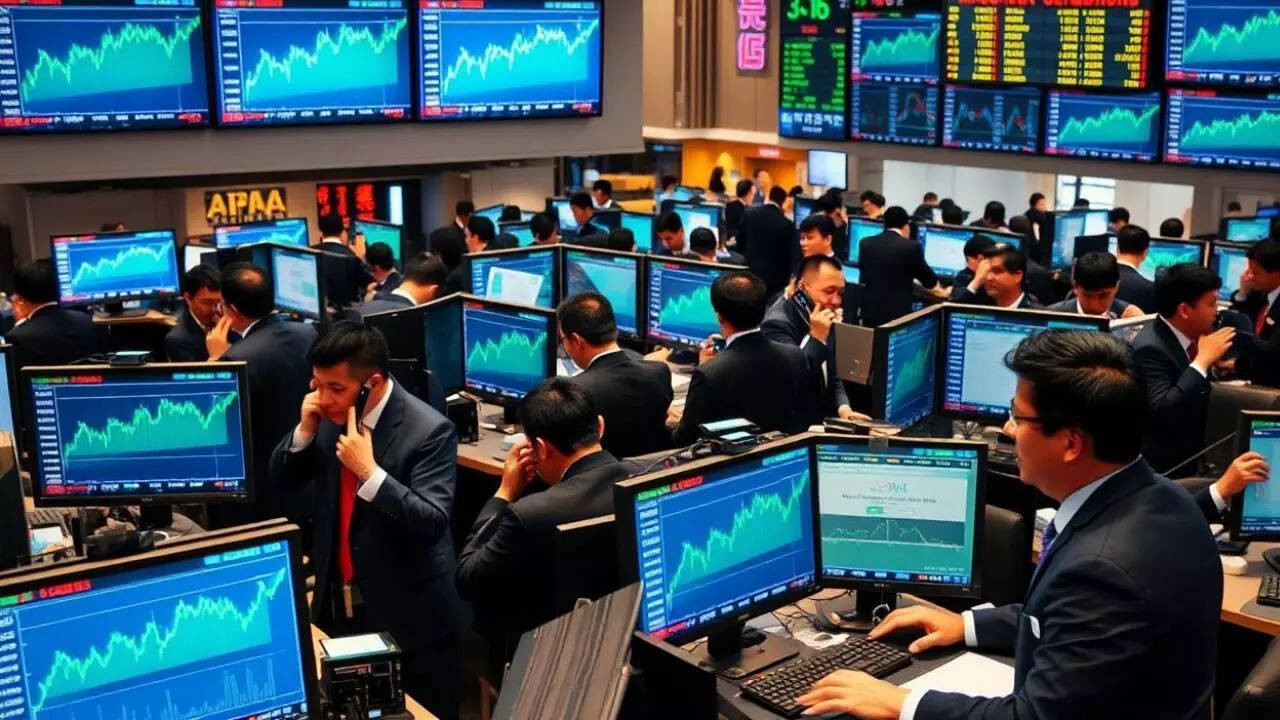Asian markets displayed mixed performance as investors anticipated the US Federal Reserve’s potential interest rate cut. Japan’s Nikkei 225 saw gains, despite a decline in exports to the US. Australia, South Korea, and China experienced dips, while Hong Kong’s Hang Seng rose.
Navigating the Murky Waters: Decoding the Latest Asian Market Moves
The global financial landscape is a constantly shifting mosaic, a dance of numbers and sentiment that keeps investors on their toes. Today’s performance in Asian markets offered a mixed bag, reflecting a complex interplay of factors that demand a closer look. While Japan’s Nikkei index managed a modest climb, the broader picture painted a more nuanced story. Let’s dive into the currents shaping these markets.
Japan’s Nikkei Defies the Trend: A Closer Examination
Amidst the general uncertainty, Japan’s Nikkei 225 stood out, edging upward by 0.2%. This positive movement suggests a degree of resilience in the Japanese economy, perhaps buoyed by specific sector performance or positive domestic news. But why is Japan seemingly bucking the trend? It’s worth considering the Bank of Japan’s (BOJ) continued ultra-loose monetary policy. While other central banks grapple with inflation by raising interest rates, the BOJ’s stance provides a different economic environment, one that might be more favorable to certain Japanese companies and investors. This creates a unique dynamic, potentially attracting investment while other markets face headwinds. However, it also raises questions about long-term sustainability and the potential for future adjustments.

Wall Street’s Wobble: A Ripple Effect Across the Pacific
The overnight performance on Wall Street undoubtedly played a role in shaping the mood in Asia. The slight pullback from record highs in the US markets acted as a cautionary signal, reminding investors that even seemingly unstoppable rallies can face corrections. This nervousness is easily transmitted across global markets. Investors are interconnected. A hiccup in the US often triggers a domino effect, causing investors in Asia to re-evaluate their positions and potentially take profits. This highlights the interconnectedness of the global economy and the importance of monitoring key indicators beyond regional borders.
A Mixed Bag Across Asia: Understanding the Divergences
Beyond Japan, other Asian markets presented a less clear-cut picture. Some markets experienced moderate gains, while others saw slight declines. This divergence is not surprising, given the diverse economic realities across the region. Factors such as local inflation rates, government policies, and export performance all contribute to the unique performance of each market. For example, South Korea, heavily reliant on technology exports, might react differently to global tech trends compared to a country more focused on domestic consumption. Furthermore, political stability (or instability) in specific regions can also significantly impact investor confidence.
The Elephant in the Room: Inflation and Interest Rates
Underlying all these market movements are the persistent concerns about inflation and the anticipated actions of central banks. The fight against inflation remains a top priority for policymakers around the world, and the expectation of further interest rate hikes continues to weigh on investor sentiment. Higher interest rates typically translate to increased borrowing costs for businesses, potentially dampening economic growth and impacting corporate earnings. This creates a risk-averse environment, leading investors to be more cautious and selective in their investment decisions. The constant speculation surrounding future rate hikes adds to the volatility and uncertainty in the market. Check out our analysis on [linking to a page about inflation].
Decoding the Signals: What Does It All Mean?
So, what’s the takeaway from this mixed performance in Asian markets? It’s a reminder that investing is a marathon, not a sprint. Short-term fluctuations are inevitable. Long-term success depends on a well-diversified portfolio, a thorough understanding of market dynamics, and a disciplined approach to risk management. Paying attention to factors like global economic trends, local economic indicators, and geopolitical events is crucial for making informed investment decisions. It’s also essential to avoid being swayed by short-term market noise and instead focus on the underlying fundamentals of the companies and assets you’re investing in. Navigating these murky waters requires a steady hand and a long-term perspective.
The current state of Asian markets, with Japan’s Nikkei as a notable exception, reflects a global environment grappling with inflation and uncertainty. Prudent investors should focus on diversification and fundamental analysis, staying informed and prepared for potential volatility. Only then can they hope to navigate the ever-changing tides of the financial world and achieve their long-term investment goals.







